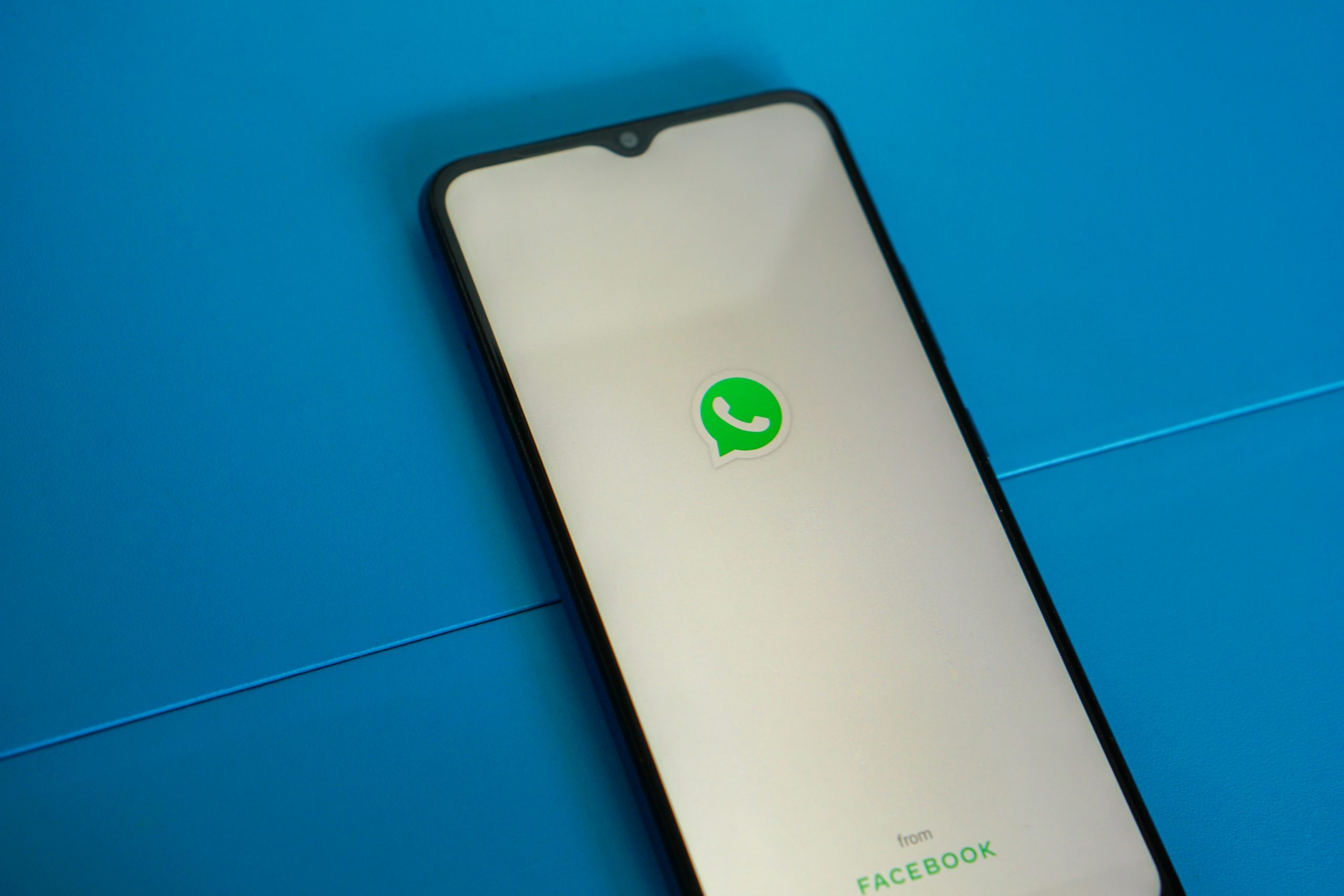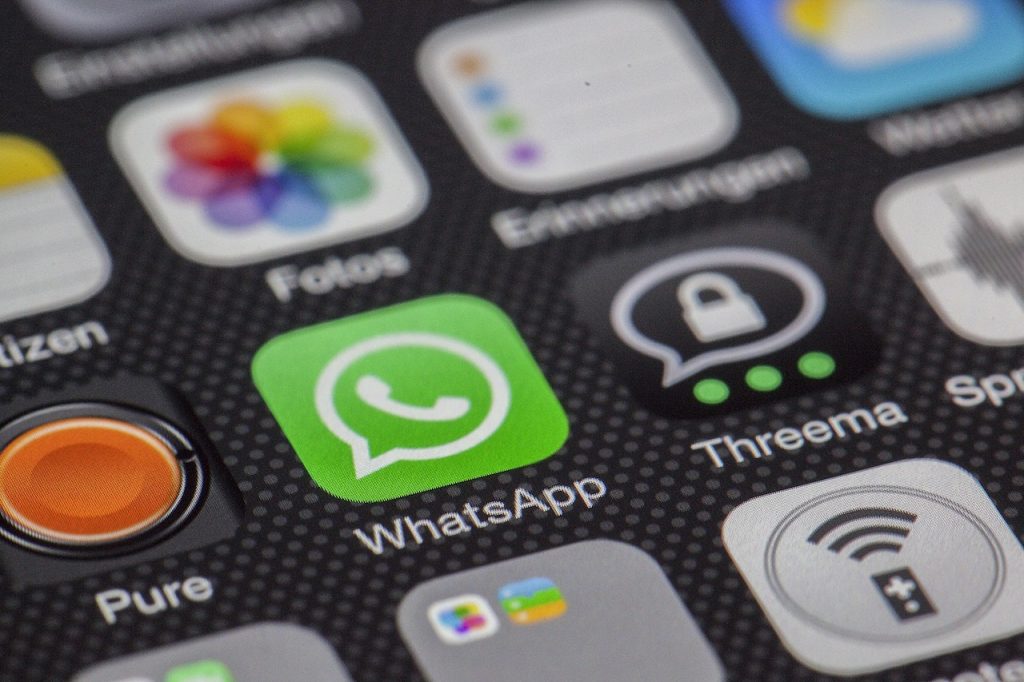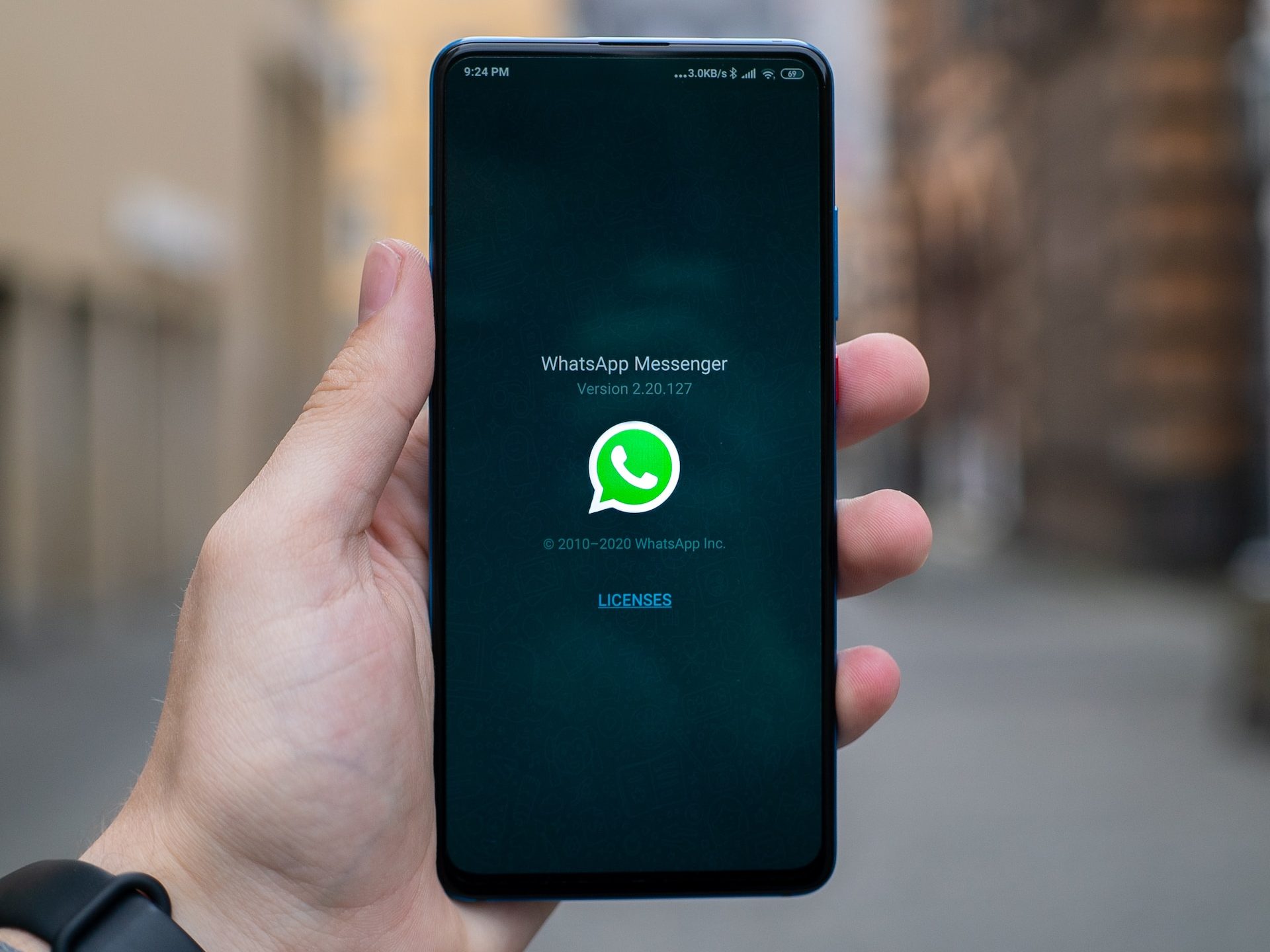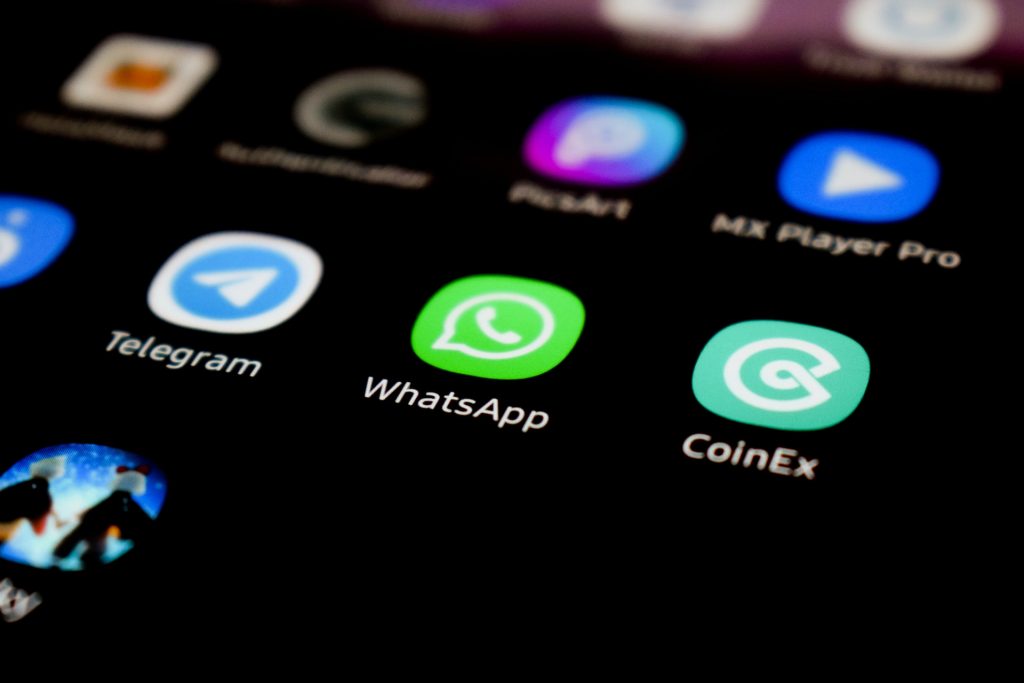
WhatsApp Tech Stack Explored — The Tech Behind Series
Jerry Wallis
18 min read

As one of the world’s most popular instant messaging services, WhatsApp has changed how people communicate. The app is known for its user-friendly interface, reliability, and security features.
In this article, we explore the technology behind WhatsApp and how it has enabled the app to become the communication tool of choice for millions of users.
So let’s get right into the WhatsApp tech stack, shall we?
Introduction To WhatsApp 📞

WhatsApp is a popular messaging application that enables users to send text and voice messages, make voice and video calls, and share files and locations with other users. The app was created in 2009 by two former Yahoo employees, Jan Koum and Brian Acton, who wanted to develop a messaging service that was secure, fast, and easy to use. In February 2014, Facebook acquired WhatsApp for $19 billion, making it one of the most expensive acquisitions in tech history.
To use WhatsApp, users must first download the app on their mobile device and create an account using their phone number. Once registered, they can start messaging other users who are in their contacts list.
Messages are sent using end-to-end encryption, meaning only the sender and recipient can read the messages, and no third parties, including WhatsApp, can access them. This ensures that users’ conversations remain private and secure.
The service uses internet connectivity, either through Wi-Fi or cellular data, to send and receive messages, voice calls, and video calls. The app also offers various features like group chats, status updates, and sharing media files, including photos and videos.
With over 2 billion users worldwide, the app has become one of the most popular messaging applications, especially in countries such as the US, India, and Brazil, where it is widely used for personal and business communication.
Now that you know the basic information about WhatApp, let’s get straight into the technical stuff: the server and client architectures of the messaging platform.
Architecture Of WhatsApp 🏛️
The architecture of WhatsApp consists of multiple layers, including the client layer, business logic layer, and database layer. The client layer is responsible for handling user interactions, while the business logic layer handles the processing of messages and communications between users. The database layer stores user information, message data, and metadata for user accounts.
The app’s architecture can be broadly divided into the server and the client architecture. The following section will briefly describe these two architectures.
🗄️ WhatsApp Server Architecture
The app’s server architecture is further divided into two main components: the client-side app and the server-side infrastructure. The client-side app runs on the user’s device, while the server-side infrastructure comprises various servers and databases that store and manage user data.
The servers are divided into two categories: front-end servers and back-end servers. The front-end servers handle user authentication, message encryption, and message routing. The back-end servers store user data, including chat histories, media files, and profile information.

WhatsApp uses a combination of technologies to ensure messages are delivered quickly and reliably. For example, it uses the Signal Protocol for end-to-end encryption, ensuring messages are only visible to the intended recipients. Additionally, it uses a distributed database system to ensure that user data is always available, even if some servers go down.
That means its server architecture is built to handle vast amounts of data, ensuring quick and secure message delivery. It employs front-end and back-end servers, end-to-end encryption, and distributed databases to offer millions of users a dependable and user-friendly messaging service globally.
🌐 WhatsApp Client Architecture
The WhatsApp client architecture is divided into several components: the user interface, network layer, encryption layer, and message delivery layer.
The user interface is responsible for displaying the app’s features and providing users with an intuitive interface to interact with the app. The network layer handles the communication between the client and server, ensuring that messages are delivered quickly and reliably.
The encryption layer encrypts messages so the intended recipient can only read them. For example, the app uses end-to-end encryption, which ensures that messages are encrypted on the client’s device and can only be decrypted by the intended recipient. This ensures that messages are kept private and cannot be intercepted by third parties.
The message delivery layer ensures that messages are delivered to the recipient’s device as quickly and reliably as possible. This layer uses various techniques, such as push notifications, message queuing, and message synchronisation, to ensure that messages are delivered even if the recipient is offline.
In short, the app’s client architecture is designed to provide users a smooth and user-friendly experience while ensuring their messages’ security and privacy. Using a combination of user interface components, network layers, encryption layers, and message delivery layers, WhatsApp provides a reliable and user-friendly messaging service to millions worldwide.
Encryption & Security On WhatsApp 🛡️
Encryption is the process of converting plain text or data into a secret code to prevent unauthorised access or viewing. In other words, encryption is a security mechanism that ensures that only the intended recipient can read a message or data. Encryption is widely used in various applications, including messaging apps like WhatsApp, to protect users’ privacy and ensure the confidentiality of their messages.
It’s evident that the app uses end-to-end encryption to protect the privacy and security of users’ messages. This means that messages sent between users are encrypted on the sender’s device and can only be decrypted by the intended recipient. Furthermore, the encryption key is stored on the sender and recipient devices and is not accessible to anyone else, including the app itself.
As mentioned earlier, WhatsApp uses the Signal Protocol, an open-source encryption protocol, to implement end-to-end encryption. The Signal Protocol uses symmetric and asymmetric encryption to ensure that messages are secure and can only be accessed by the intended recipient.
When a user sends a message on WhatsApp, the message is encrypted using the recipient’s public key, which the recipient’s private key can only decrypt. This ensures that only the intended recipient can read the message. Additionally, the app does not store messages on its servers once they are delivered, further enhancing the security and privacy of users’ messages.
👥 How WhatsApp Protects User Data
The service takes the protection of user data seriously and has implemented several measures to ensure that user data is secure and protected. Some of these measures include the following.
- End-To-End Encryption: WhatsApp uses end-to-end encryption to ensure that messages sent between users are encrypted on the sender’s device and can only be decrypted by the intended recipient. This means that only the sender and recipient have access to the content of the message, and the company and other third parties cannot read the messages.
- Two-Factor Authentication: The app provides an optional two-factor authentication feature to add an extra layer of security to user accounts. This feature requires users to enter a six-digit PIN in addition to their phone number and device to access their account.
- Data Minimisation: The app only collects the minimum amount of user data required to provide the messaging service. This includes a user’s phone number, profile picture, and contacts. Other data, such as chat histories and media files, are stored locally on the user’s device and encrypted.
- Security Updates: The app regularly releases security updates to address vulnerabilities and protect against potential threats. Users are encouraged to update their app to the latest version to ensure they have the latest security features.
- No Ads: The app does not display ads, which means user data is not used for targeted advertising. This helps protect user privacy and ensures that user data is not used for commercial purposes.

That means WhatsApp protects user data through measures such as end-to-end encryption, two-factor authentication, data minimisation, security updates, and no ads. These measures help ensure user data is secure and protected from potential threats. In addition, through end-to-end encryption, the app ensures that messages are only visible to the sender and intended recipient, which helps prevent sensitive information from being exposed.
Also, two-factor authentication provides extra protection to user accounts, which helps prevent unauthorised access. Data minimisation helps ensure that only necessary user data is collected, which reduces the risk of data breaches or misuse. Meanwhile, security updates help protect against potential threats, and no ads mean that user data is not being used for commercial purposes.
WhatsApp Business & API 📊
WhatsApp Business is a separate app designed specifically for businesses to communicate with their customers on the WhatsApp platform. It provides companies with various tools and features to help them better manage customer interactions and improve customer service.
Some of the key features of WhatsApp Business include the ability to create a business profile with important information such as address, email, and website. Businesses can also make quick replies and automated messages to respond to customer inquiries more efficiently. Additionally, WhatsApp Business allows the creation of labels and tags to help companies organise customer interactions.
The main difference between WhatsApp Business and the regular WhatsApp app is that WhatsApp Business is designed specifically for businesses, while the regular app is intended for personal use. WhatsApp Business also offers additional features and tools that are tailored to meet the needs of companies, such as the ability to send notifications to customers about product updates or special offers.
WhatsApp Business API is a powerful tool businesses can use to communicate with their customers on the popular messaging app. With the API, businesses can automate and personalise their communication, send notifications, provide customer support, and even sell products or services directly through the app. To use WhatsApp Business API, businesses must apply for access, integrate the API with their existing systems, and follow the service’s guidelines and policies for using the platform.
Many businesses are successfully using WhatsApp Business API for customer communication. For instance, airlines use the API to send their customers flight confirmations, updates, and boarding passes. Banks and financial institutions use the API for fraud alerts, account balance notifications, and customer support. For instance, eCommerce companies use the API to send order updates, delivery notifications, and personalised product recommendations. And healthcare providers use the API for appointment reminders, medication schedules, and patient communication.
Businesses can leverage WhatsApp Business API to provide a convenient and engaging communication channel for their customers, ultimately increasing customer loyalty and sales.
WhatsApp Features ✨
When it comes to messaging, the app handles it by allowing users to send and receive messages in real-time. When a user sends a message, it is encrypted on their device and sent to WhatsApp servers. The message is then encrypted again and sent to the recipient’s device, where it is decrypted and displayed. WhatsApp’s end-to-end encryption ensures that only the sender and recipient can read the message, making it a secure platform.
The service also offers voice and video calling features, which allow users to make free calls to other WhatsApp users anywhere in the world. These calls are also encrypted, ensuring that the content of the call remains private. In addition, users can switch between voice and video during a call and add up to three other people to create a group call.

The app uses location data to offer location-based services, such as sharing a user’s current location with friends or family. Users can share their live location for a limited period or send their current location as a static message. It also uses location data for its WhatsApp Business API, which allows businesses to provide location-based services to their customers, such as store locations and directions.
To reiterate, WhatsApp offers a range of features that make it a popular messaging app for personal and business communication. With end-to-end encryption, voice and video calling, and location-based services, the service provides a secure and convenient platform for users to communicate with each other.
WhatsApp Technology Stack ⚙️
WhatsApp uses various technologies to provide its services. It is based on the Signal Protocol, an end-to-end encryption protocol that ensures that only the sender and recipient can read the messages exchanged. The app also uses a custom-built client-server architecture to manage the user’s data and interactions.
In terms of software development, the service follows a continuous integration and deployment process, where changes to the codebase are automatically tested and deployed to production. The application also employs a robust security and privacy framework, which includes a bug bounty program that rewards researchers for identifying security vulnerabilities.
AI and machine learning play a significant role in its operations. For example, the application uses machine learning algorithms to detect and filter spam messages, which helps to improve the user experience. Additionally, WhatsApp uses AI to power its end-to-end encryption, which uses machine learning to create unique encryption keys for each user.
Moreover, the app uses natural language processing (NLP) to enable its chatbot feature. This feature allows businesses to create chatbots that can interact with customers, answer frequently asked questions, and provide support.
🖥️ WhatsApp Front-End Tech Stack
WhatsApp’s front-end tech stack comprises several components that work together to create a smooth and user-friendly user experience. Here are some of the main components.
- React Native: WhatsApp uses React Native as its primary technology for building mobile applications. React Native is an open-source framework developed by Facebook that allows developers to build mobile apps using JavaScript and a single codebase that can run on iOS and Android devices.
- Redux: Redux is a state management library used to manage the state of its application. Redux allows developers to create a centralised store of data that can be accessed from anywhere in the application, making it easier to manage data and keep track of changes.
- WebSocket: The app uses WebSocket technology to facilitate real-time communication between users. WebSocket protocol allows bi-directional communication between a client and a server over a single connection, enabling real-time data transfer.
- SQLite: SQLite is a lightweight relational database management system the app uses to store data locally on a user’s device. SQLite is a popular choice for mobile applications because of its small size and high performance.
- WhatsApp Web: WhatsApp Web is a web-based version of the WhatsApp application that allows users to access their messages and conversations from a desktop computer. WhatsApp Web uses React and a WebSocket connection to synchronise data between the web client and the mobile application.
🛠️ WhatsApp Back-End Tech Stack

WhatsApp’s back-end tech stack consists of various components that support the application’s core functionality. Some of the main components are explained below.
- Erlang: WhatsApp’s core messaging system is built using Erlang, a programming language designed for building distributed systems. Erlang supports concurrency, fault tolerance, and real-time communication, making it an excellent choice for building messaging applications.
- YAWS: YAWS (Yet Another Web Server) is an open-source web server that the app uses to handle HTTP requests. YAWS is known for its scalability and performance and is a popular choice for building high-traffic web applications.
- Ejabberd: Ejabberd is an open-source XMPP (Extensible Messaging and Presence Protocol) server that the app uses to handle instant messaging and presence information. Ejabberd is known for its scalability and reliability and is a popular choice for building messaging applications.
- Cassandra: Cassandra is a distributed NoSQL database The app uses to store user data and messages. Cassandra provides high scalability and performance and is designed to handle large amounts of data across multiple nodes.
- Kafka: Kafka is a distributed streaming platform the app uses to handle real-time data streams. Kafka provides high scalability and fault tolerance and is famous for building real-time applications.
WhatsApp In The Future 🔮
WhatsApp has several plans and upcoming features to improve its services and user experience. One of the most significant forthcoming features is the introduction of multi-device support, allowing users to use it on multiple devices without needing their phone to be connected to the internet. Additionally, WhatsApp is working on improving its group video and audio call capabilities and introducing disappearing messages for all chats.
The service’s impact on the future of communication is significant. With over two billion monthly active users, WhatsApp has become an essential tool for communication globally. The platform’s end-to-end encryption and privacy features have set a standard for other messaging apps. Additionally, its business solutions and chatbot features have opened up new ways for businesses to engage with customers.
To adapt to new technologies, WhatsApp has been experimenting with various features such as QR codes, which make it easier for businesses to connect with their customers, and payment integration, which allows users to send and receive money through the app. Moreover, WhatsApp has been exploring using augmented and virtual reality (AR & VR) technologies to enhance the overall user experience.
Historically WhatsApp has been focused on expanding its features and user base. Other potential plans include integrating more business-related features, improving group chat functionality, and enhancing the overall user experience with new features and updates. Additionally, the company may continue prioritising privacy and security measures to maintain user trust.
It’s apparent that WhatsApp continually improves its services and adapts to new technologies to provide its users with a secure and efficient messaging platform. As a result, its impact on the future of communication is significant. With the introduction of new features and technological advancements, it will continue to be a vital communication tool for billions of people worldwide.
WhatsApp & Privacy Concerns 👁️🗨️
While there are so many positive sides to the story, WhatsApp’s data collection policies have been a topic of discussion and concern for many users. It’s true that WhatsApp collects user data, such as phone numbers, device information, and usage data. However, WhatsApp has consistently maintained that it does not read or store the content of user messages, and all messages are end-to-end encrypted.
WhatsApp handles user data carefully and has implemented several security and privacy features to protect user data. For example, end-to-end encryption ensures that only the sender and recipient can read the messages exchanged. The app also has two-factor authentication for an extra layer of security. Additionally, WhatsApp allows users to enable a disappearing messages feature, which deletes messages after a set time to ensure that sensitive information is not stored indefinitely.

When compared to other messaging apps, WhatsApp’s privacy policies are considered to be relatively strong. Many other apps collect and share more user data with third-party entities, and some even read and analyse user messages for targeted advertising. On the other hand, WhatsApp does not use user data for advertising purposes and has committed to protecting user privacy.
While WhatsApp does collect some user data, it handles it carefully and has implemented several security and privacy features to protect user data. When compared to other messaging apps, WhatsApp’s privacy policies are considered to be relatively strong. However, users should still be aware of the data that WhatsApp collects and take necessary precautions to protect their privacy.
Conclusion: The WhatsApp Tech Stack 📋
WhatsApp’s technology has had significant impacts on communication globally. Its end-to-end encryption and custom-built client-server architecture have set a new standard for secure and efficient messaging. WhatsApp has also been at the forefront of introducing new features and adapting to new technologies, such as multi-device support and payment integration, improving the user experience.
WhatsApp has also had a massive impact on communication globally, with over two billion monthly active users in over 180 countries. The app has become essential for personal and business communication, allowing people to connect easily with friends, family, and colleagues worldwide. Its business solutions have also opened up new opportunities for companies to engage with their customers and expand their reach.
We can learn several lessons from WhatsApp’s technology. Firstly, security and privacy should be top priorities when developing messaging apps or any technology that handles sensitive data. Secondly, introducing new features and adapting to new technologies can improve the user experience and keep users engaged. Finally, user feedback should be considered to improve and update the app to meet user needs continually.
In conclusion, WhatsApp’s technology has significantly impacted communication globally, and we can learn several lessons from its development process. Its security and privacy features have set a new standard for messaging apps, and its business solutions have opened up new business opportunities.
By continually improving and adapting to new technologies, WhatsApp has remained a leading messaging app globally. If you want to learn more about WhatsApp’s tech stack — or find more information on many other remarkable new-age technologies — feel free to reach out to us for a friendly discovery chat.
Topics
Published On
April 05, 2023

